The longest river that begins and ends within the state of Florida is the St. Johns. Originating at Blue Cypress Lake, the St. Johns River meanders over 300 miles north to its terminus in the Atlantic Ocean near Jacksonville.1,2 At its southern end, the river is shallow and marsh-like, scarcely navigable by boat. As it works its way north into Brevard County, the river deepens, snaking, curving and intertwining with itself while at other times widening broadly into lakes. Extending northward, the river loses its winding quality and continues to widen, reaching three miles across in some places.2,3
If you’ve heard that it’s rare for a river to flow from north to south, you’re not alone, but this is actually untrue. The origin of this myth is unclear. In reality, it’s not uncommon for rivers to flow in any direction.4 In any case, as this river moves through the state it passes through 18 counties. It’s floodplain, or watershed, comprises over 12 thousand square miles where more than five million Floridians live. Due to its immense impact, understanding the St. Johns and maintaining the health of this body of water is integral to the well-being of our state. That’s where the St. Johns River Water Management District or SJRWMD comes in.1

Photo Credit: Kirra Scudder
St. Johns River Water Management District
Historically, the St. Johns River has been used as a water source, a place for waste, land for agriculture as well as transport for people and commerce. While some of these uses continue in modern times, it is now a central site for recreation and conservation of natural resources. For centuries, the St. Johns River has been home to a large variety of wildlife. To name just a few, there are manatees, alligators, fish, crustaceans, turtles and a myriad of bird species, both migratory and year-round. All of these animals and more rely on the St. Johns River as their home.1
Monitoring this vast waterway and its floodplains is a big undertaking. The SJRWMD works over hundreds of thousands of acres to manage various habitats and invasive species as well as to monitor water and improve water quality. Through data collection, the SJRWMD has an intimate understanding of rainfall, water levels, water quality and potential flood risks. Not only is the water level in the river monitored, but also the water level of the tributaries that flow into the river. This detailed data collection is not only valuable to the health of the St. Johns River habitat and its surrounding areas but also to the millions that live and make their livelihood near the river.1

Photo Credit: Kirra Scudder
Agriculture
Agriculture has been a part of the area surrounding the St. Johns River since the 1890s when the Flagler Railroad was built down the east side of the state.5 The railroad allowed potato farming to become financially viable and, subsequently today, some farms around the St. Johns River have been held for five generations.5,6 To this day, potatoes are still grown in the area alongside cabbage, squash and cucumbers.5
Over the years, methods for growing bountiful crops have adversely effected the health of the river.5 However, initiatives exist to help modern farmers minimize negative impacts on the environment. The SJRWMD and Tri-County Agricultural Area (TCAA) as well as the general environmental Best Management Practices (BMP) all function together through multiple strategies aimed at improving water quality in the St. Johns. Ninety-eight percent of farmers have voluntarily adopted modern best management practices to better care for their land and mitigate the environmental effects of agriculture.6 In some cases, organizations such as SJRWMD help to subsidize the cost of environmentally friendly changes such as smart application of fertilizer, efficient irrigation methods as well as water monitoring.6 Initiatives such as these have conserved over 1.7 billion gallons of water per year. Additionally, nutrient runoff from fertilizers has been greatly decreased, reducing algal blooms that threaten wildlife.3
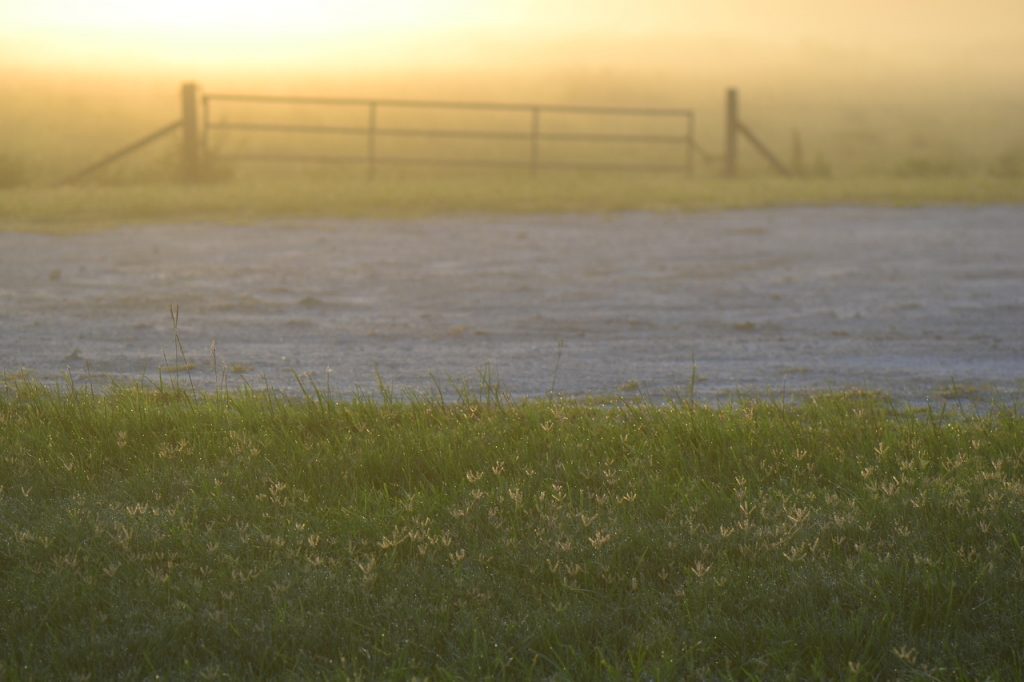
Photo Credit: Kirra Scudder
Cattle Ranching
Stretching back further than farming, cattle ranching has been a part of the development and growth of Florida for over 400 years. While the effect of this industry on the environment and our society is subject to great debate, cattle ranching does have some environmental benefits. Historically in the state of Florida, the lands that cattle graze have been home to countless species of animals and plants that coexist symbiotically with ranching. Grazing cows change the landscape and provide a specific type of habitat for many species of animals and plants.1 If cattle ranching were to be eliminated or made unprofitable, it would have the potential to reduce habitats for countless species.
Unfortunately, when cow pastures are redeveloped, they are often turned into subdivisions rather than becoming preserved lands. Along the St. Johns River and on adjoining lands, cows graze in habitats shared by countless other fauna including deer, raccoons, tortoises, birds, butterflies and bees. The Flora in the area is comprised of blooming flowers like pine lilies, wild orchids, irises and pitcher plants among numerous other species of plants and wildflowers.
Many lands now presided over by the St. Johns Water Management District have historically been used for cattle ranching. Continuing this activity produces revenue that helps with the expense of managing and maintaining the large acreage. Furthermore, cattle ranching operations put more eyes on the land and help to ensure its protection from environmentally destructive or illegal activities. When cows graze, they naturally help manage fire risks by minimizing costs associated with controlled burns and other fire mitigation techniques.1 Furthermore, cattle ranching is not incompatible with other activities. Land where cows graze is often still used for various recreational purposes. Hiking or biking through the pastures can feel like a glimpse into Florida’s past.
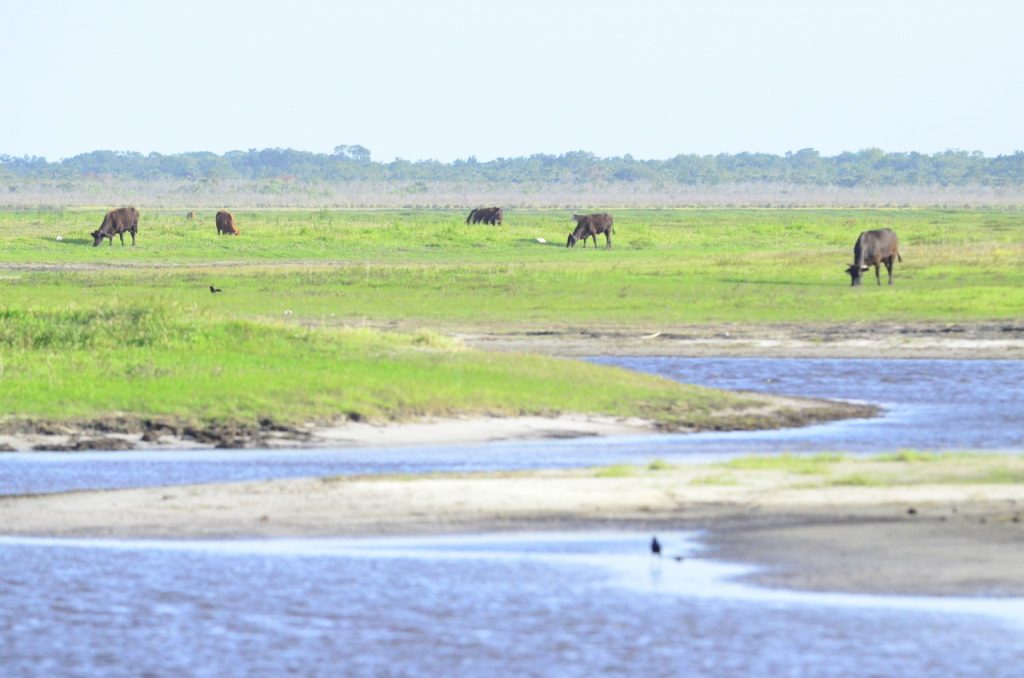
Photo Credit: Kirra Scudder
Recreation
Outdoor activities in the St. Johns River Water Management District may take place on lands used for cattle ranching, or in areas with more constrained uses. Among others, recreation activities on SJRWMD lands include hiking, biking, fishing, bird-watching, horseback riding, camping and boating.1,7 Amidst the rapid development of the state of Florida, these nature-based activities are of immense value to both Floridians and those who visit the state for its one-of-a-kind landscape.
Visitors to the river near sunrise or sunset can marvel at the way the vivid colors of the sky are reflected in slow, calm waters of the St. Johns River. At any time of day, it is possible to immerse yourself in one of the many habitats surrounding the river and witness spectacular biodiversity. When people become more intimate with these lands, it often lends itself to a greater appreciation of their unique beauty. In turn, this can inspire conservation behaviors and an increased understanding of the environment.8 Furthermore, fees paid to enter protected lands directly aid preservation and management efforts.
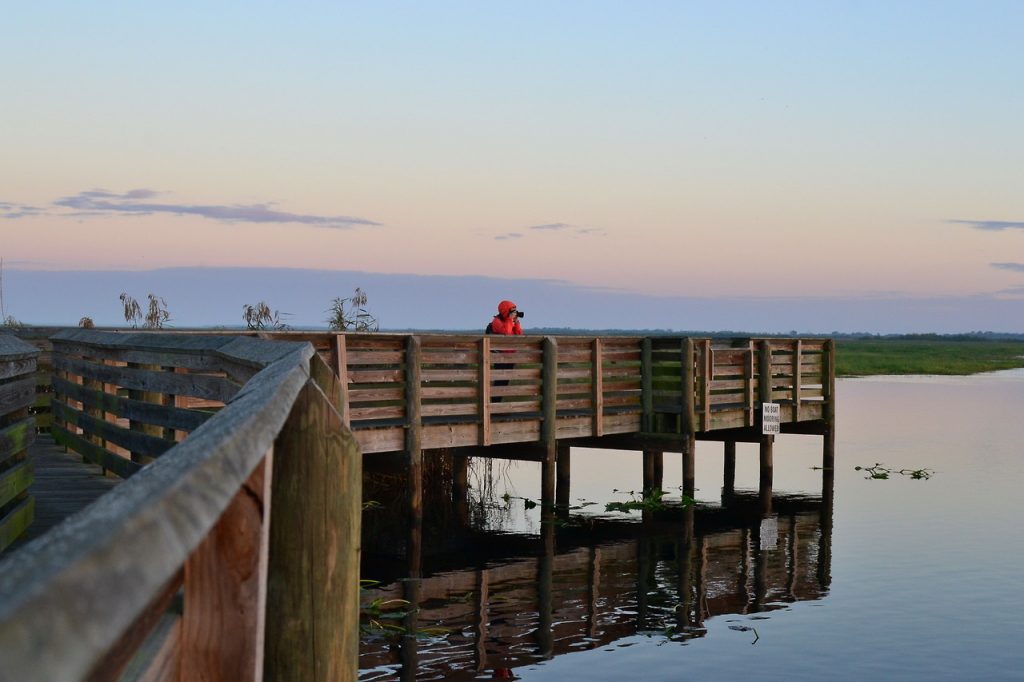
Photo Credit: Chester Martin
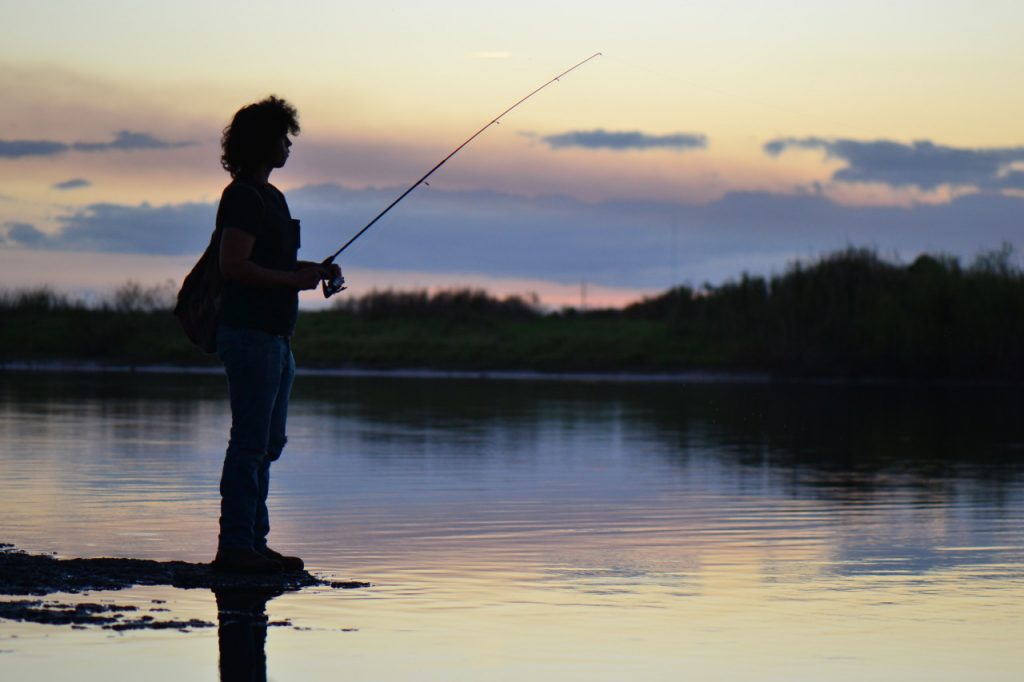
Photo Credit: Kirra Scudder
Wildlife
The St. Johns River is a prime destination for wildlife sighting. This is in part because the area of the St. Johns Water Management District is part of the larger Florida Wildlife Corridor. 9 The lands of the Florida Wildlife Corridor stretch up and down the state in linked parcels, providing large, connected habitats for both plants and animals to help them thrive. Many of the expansive habitats of the St. Johns River are major bird-watching destinations due to the extensive numbers of species that can be observed. Notably, the area is home to many threatened or endangered species of plants and animals. 1
Threatened or endangered animals include the gopher tortoise, snail kite, Florida black bear, red-cockaded woodpecker and scrub jay. Bartram’s ixia and Rugels false pawpaw are endangered plants managed and protected by the district. The SJRWMD also maintains habitat for non-endangered but still iconic species like bald eagles and burrowing owls. Methods to help endangered or threatened plants include transplanting and controlled burns, while aiding animals entails modifying or restoring habitats to best suit the species. Through careful monitoring and ongoing projects, the SJRWMD improves the outlook for many species and provides prosperity for all types of native plants and animals.
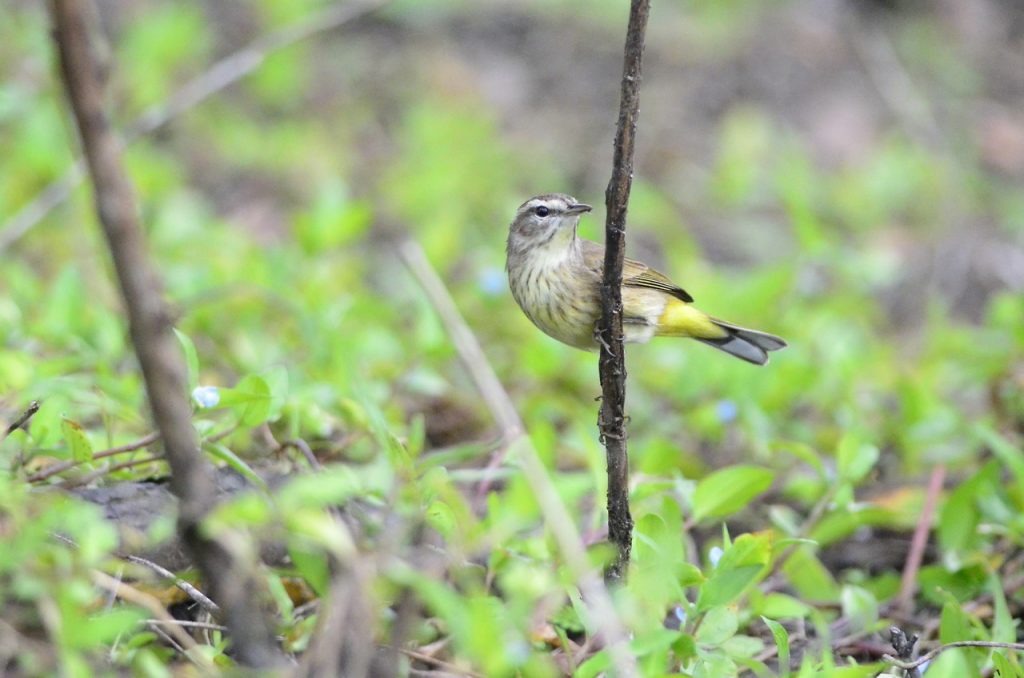
Photo Credit: Kirra Scudder
Looking Ahead At The St. Johns River
The lack of development around the St. Johns River floodplain is vital for recreation opportunities, habitats for wildlife and managing flood risks. Following the effects of Hurricane Ian during October 2022, record cresting occurred around the St. Johns River affecting some homes, businesses and roads.10 Due to constant surveillance of data, the SJWRMD was able to predict the peak of the flood before it happened. Avoiding more development near the river will ensure that high water levels are mitigated as much as possible when they occur.
Water level extremes can be consequence of flooding or a result of little rain. Periodic droughts have caused the river to become extremely low. Furthermore, the diversion of millions of gallons of water per day from the springs lessens this source of watershed, which could be of future concern to exacerbating drought conditions on the St. Johns River.11
Lastly, water quality is an ongoing issue. Flooding introduces contaminants and agriculture runoff as water makes its way from more developed areas.12 This runoff has led to fish-kills and degraded habitat. However, many improvements have been made such as acquisition of land, elimination of untreated waste, creation of public awareness and the adoption of guidelines and standards to ensure water quality.3


Photo Credits: Kirra Scudder
What You Can Do
By conserving water usage and preventing contaminants from entering the water, everyone can help to improve water quality. If you live in the St. Johns watershed, here are some actions you can take:
- Conserve energy and water – think about using a rain barrel
- Limit fertilizer and pesticide use
- Keep leaves from entering storm drains near your home
- Wash your car or boat on the lawn not the driveway
- Pick up pet waste and litter
- Landscape with native plants 13, 3
Of course, these habits can be adopted anywhere to create better health for nearby waterways. Broad efforts of conservation continue to work towards the protection of this distinctive river along with the myriad of assets it offers, but individual actions are also integral to the future of the irreplaceable resource that is the St. Johns River.
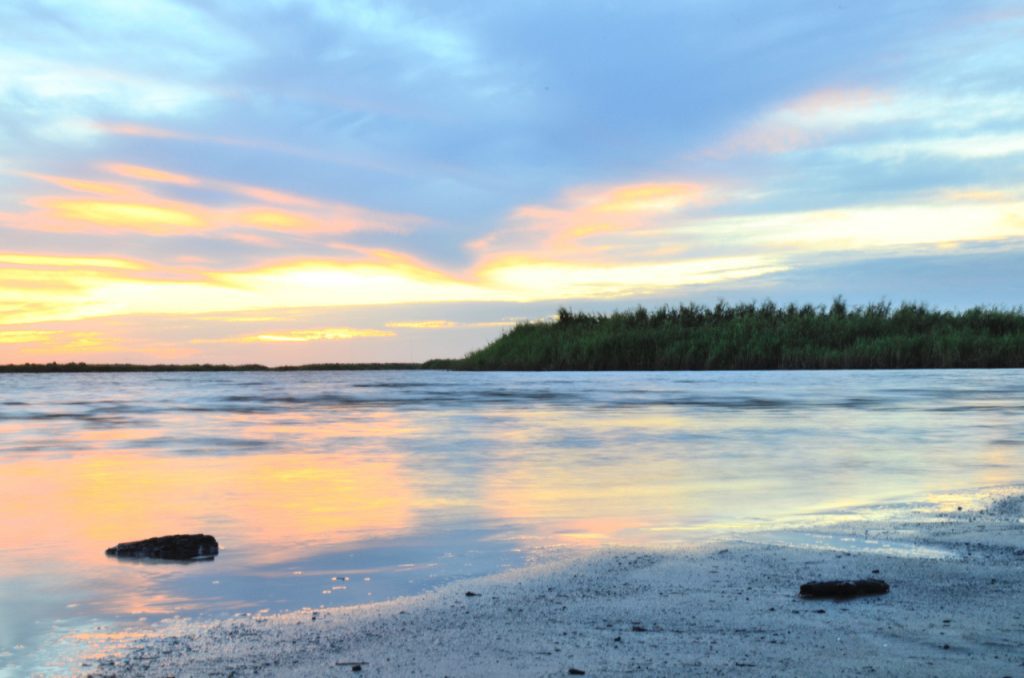
Photo Credit: Kirra Scudder
Sources:
- SJRWMD. (2022, October 6). SJRWMD. https://www.sjrwmd.com
- St. Johns Riverkeeper. (2022, February 23). Our river. https://www.stjohnsriverkeeper.org/about-us/our-river/
- SJRWMD. (2016). A story of the St. Johns River. Home of the St. Johns River Water Management District. https://www.sjrwmd.com/static/waterways/Story-of-the-SJR.pdf
- Rosenberg, M. (2006, June 27). No, not all rivers flow south. ThoughtCo. https://www.thoughtco.com/rivers-flowing-north-1435099
- Borisova, T., Racevskis, L., Fluech, B., & Provancha, J. (2009). Balancing Agricultural Production and Environmental Protection in the Tri-County Agricultural Area: Results from Stakeholder Discussions. Florida Online Journals. https://journals.flvc.org/edis/article/download/118341/116265/
- Hand, J. (2016, June 17). A river runs through it. Edible Northeast Florida. https://ediblenortheastflorida.ediblecommunities.com/food-thought/river-runs-through-it
- North Brevard Business Directory. (10, August 11). SJRWMD – Recreation guide to district lands. Titusville Florida – North Brevard Area Directory 32780. https://nbbd.com/godo/SJRWMD-RecreationAreas.html
- Green, J. (2018, April 17). Advantages of ecotourism. Travel Tips – USA Today. https://traveltips.usatoday.com/advantages-ecotourism-61576.html
Read, S. (2022, November 9). The Florida wildlife corridor. IDEAS For Us. https://ideasforus.org/the-florida-wildlife-corridor/
- Collins, M. (2022, October 10). Upstream flooding in St. Johns river still rising. WJXT. https://www.news4jax.com/weather/2022/10/09/upstream-flooding-in-st-johns-river-still-rising/
- Henry, S. (2022, October 12). The fight for Florida’s springs. IDEAS For Us. https://ideasforus.org/the-fight-for-floridas-springs/
- St. Johns River Report. (2021). Lower St. Johns River Basin “State of the River” Report. https://sjrr.domains.unf.edu/
- Shemaria, L. (2022, July 28). Benefits of native landscaping. IDEAS For Us. https://ideasforus.org/benefits-of-native-landscaping/








